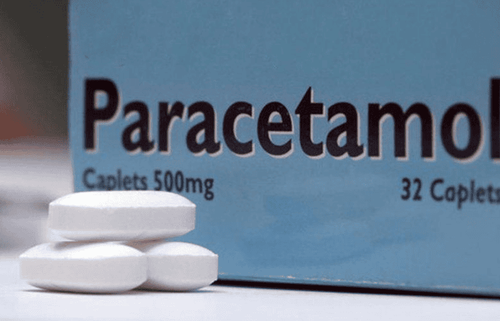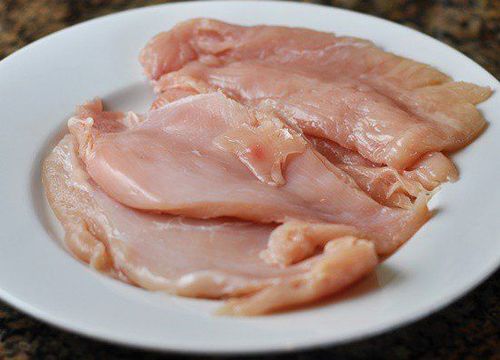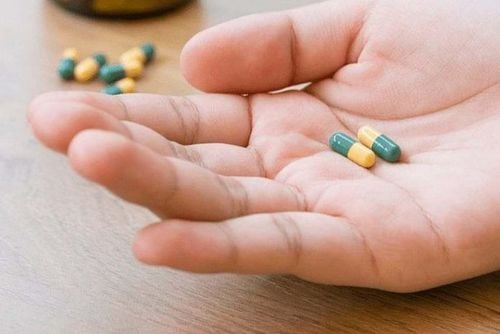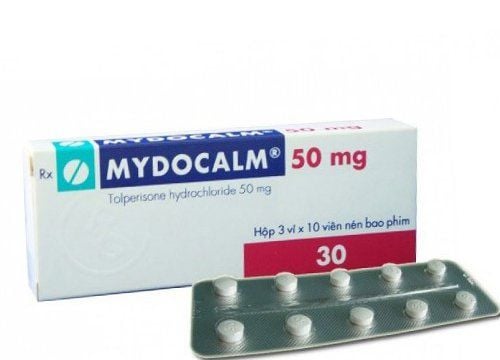This is an automatically translated article.
Practicing sports with correct technique and regularly helps to improve health. But sometimes the wrong or new exercise also causes muscle pain. Usually this condition goes away after a few days of rest, but in some cases, muscle relaxants are used.
Usually the pain will go away after a few days of rest and follow the RICE principle (Rest – Cold – Compression – Elevate the injured area). But if, after 1-2 days of rest, the muscle pain does not improve or disappear, but there is a slight swelling in the muscles, then you need to think about muscle fiber damage caused by overtraining - called delayed onset muscle soreness (DOMS). In case of severe pain, it is necessary to use some additional drugs as prescribed by the doctor such as pain relievers, muscle relaxants.
1. What are pain relievers and muscle relaxants? Painkillers are a type of medicine used to help patients relieve pain caused by disease. Often used to treat pain such as headache, cold, flu; muscle pain, joint pain, back pain caused by a herniated disc or spinal stenosis; physical trauma, surgery or childbirth...
A muscle relaxant is a drug that relaxes or relieves muscle tension. Often used to treat acute muscle pain and discomfort caused by muscle spasms, which are involuntary muscle contractions that cause excessive muscle tension.
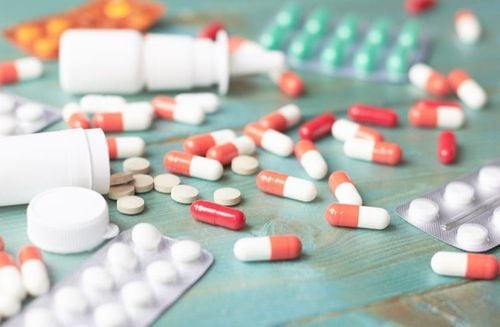
Thuốc giảm đau giãn cơ là thuốc có khả năng thư giãn hoặc giảm căng cơ
2. Classification of pain relievers and muscle relaxants 2.1. Classification of analgesics Includes the following groups of drugs:
Narcotic analgesics (which act on the central nervous system): also known as morphine-type analgesics, with the characteristic of being addictive and controlled in use. drugs under the drug regulations. (Prescription drugs) Antipyretic - analgesic - anti-inflammatory (peripheral analgesic): The drug is effective for mild and localized pain. Especially good for pain caused by inflammation (arthritis, myositis, neuritis, periodontitis). No visceral analgesia, non-sedating and non-addictive effect. (Over-the-counter drugs). However, when using pain relievers, it is often used according to the ladder of indications for pain relief as recommended by the World Health Organization WHO.
The chart is as follows:
Step 1: Drugs without morphine (Paracetamol, low dose non-steroidal anti-inflammatory drugs, Noramidopyrine, Idarac). Step 2: Use weak narcotic pain relievers (Codeine, Dextropropoxyphene, Buprenorphine, Tramadol) Step 3: Strong morphine. In some cases, caution should be exercised when taking pain relievers such as children, pregnant and lactating women, and the elderly. These subjects should consult a doctor before using even non-prescription drugs.
2.2. Classification of muscle relaxants Muscle relaxants include:
Smooth muscle relaxants: drugs acting on smooth muscles (gastrointestinal tract: esophagus, stomach, intestines; bronchi, bronchioles, bladder, ureters, arches, walls of blood vessels, muscles of the iris, ciliary muscles, ciliary muscles, ducts of glands). The drug has the effect of relaxing smooth muscle, reducing the intensity and speed of smooth muscle contraction, thereby supporting pain relief. Commonly used in the treatment of pain caused by spasms of the gastrointestinal tract, biliary tract, urinary tract and genitals. Skeletal muscle relaxants: Skeletal muscles are muscles that we can consciously control, can be longitudinal or transverse and distributed around bones throughout the body and these muscle fibers are connected to nerves terrible. The drug has the effect of reducing skeletal muscle tone and causing muscle relaxation. Because muscle pain in sports is rhabdomyolysis, rhabdomyolysis is used to treat it.
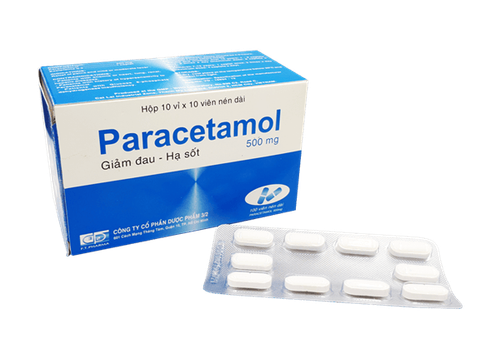
Paracetamol là thuốc giảm đau cơ trong tập thể thao thường được sử dụng
3. Using muscle relaxants when exercising From the classification of pain relievers and muscle relaxants above, it can be seen that drugs used to relieve pain and relax muscles during exercise include drugs in the group of pain relievers. peripheral pain and rhabdomyolysis. Depending on the condition and level of pain, the patient is prescribed drugs to use:
Commonly used muscle pain relievers in sports are: Paracetamol (10-15mg/kg body weight), Efferalgan, pain relievers Non-steroidal anti-inflammatory drugs (NSAIDs) such as: Meloxicam, Celecoxib, Diclofenac, Aspirin, ... Muscle relaxants are used in the presence of painful muscle contractions: use skeletal muscle relaxants such as Myonal (Eperison), Decontractyl (Eperison) Mephenesin)... Patients should consult their doctor or pharmacist before buying the drug. It is best to see a doctor to be prescribed a safe and effective medication.
In short, exercise helps to improve health, but it needs to be practiced properly and maintained regularly, gradually increasing intensity in a planned way so that the body can adapt, avoid overtraining, need to prepare well Take care before, during and after exercise to limit the number of times of muscle pain. When muscle pain does not subside with rest, it is necessary to support muscle relaxants to improve pain. Usually, you will be prescribed a pain reliever such as Paracetamol or an NSAID. In addition, muscle relaxants can be used and should be used under the guidance of a professional.
Please dial HOTLINE for more information or register for an appointment HERE. Download MyVinmec app to make appointments faster and to manage your bookings easily.




